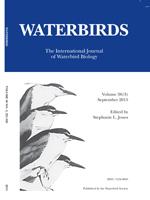The availability of suitable breeding habitats is an important factor in explaining seabird demographic fluctuations. For ground nesting seabirds, such as Little Terns (Sternula albifrons), an essential characteristic in determining suitability of breeding habitats is vegetative cover. This study evaluated whether the long-term fluctuations (1979–2014) in Little Tern breeding numbers on sandy beach colonies of Ria Formosa, Algarve, Portugal, could be explained by changes in vegetation cover at each sandy beach colony, environmental variability (measured by the climatic North Atlantic Oscillation index), or a combination of both. The percentage of vegetation cover for each sandy beach was calculated from aerial photos of Ria Formosa barrier islands from 1976 to 2012, and related to breeding census data from the same period. The climatic variation measured by the North Atlantic Oscillation index did not show a significant relationship with the number of breeding pairs nesting on each sandy beach colony. A segmented regression model constructed to model the effect of vegetation cover on the number of breeding pairs on sandy beaches found an optimal vegetation cover of around 10% and an overall breakpoint of 42%vegetation cover; the model predicted that only ∼4% of breeding pairs would endure with 90% vegetation cover and none would endure with 92% vegetation cover. Little Terns in Ria Formosa appear to adopt a fugitive strategy, moving their colonies to locations with better breeding conditions in response to the overgrowth of vegetation.
How to translate text using browser tools
1 September 2015
Changes in Vegetation Cover Explain Shifts of Colony Sites by Little Terns (Sternula albifrons) in Coastal Portugal
Catarina S. Lopes,
Jaime A. Ramos,
Vitor H. Paiva
ACCESS THE FULL ARTICLE

Waterbirds
Vol. 38 • No. 3
September 2015
Vol. 38 • No. 3
September 2015
fugitive strategy
ground-nesting terns
Little Terns
North Atlantic Oscillation
Sternula albifrons
vegetation cover




